
The Enchanting Medina of Constantine: A Journey Through Time
Discover the timeless charm of La Medina in Constantine, Algeria – a historic neighborhood rich in culture, architecture, and local craftsmanship.
Stepping into La Medina in Constantine is like entering a living museum, where every corner tells a story of ancient cultures and bustling markets. This historic neighborhood, perched high on the cliffs of Constantine, offers a unique blend of Algerian heritage and vibrant urban life. The narrow, winding streets are lined with stunning examples of Islamic architecture, from intricate mosaics to towering minarets, making it a paradise for history enthusiasts and photographers alike. As you wander through the labyrinthine alleys, you'll encounter a plethora of local shops and stalls brimming with traditional crafts, spices, and textiles. The aroma of freshly baked bread and the sound of artisans at work add to the sensory experience, creating an atmosphere that is both authentic and captivating. Don't miss the chance to visit the ancient mosques and palaces that dot the Medina, each offering a glimpse into the city's rich past. La Medina is not just about history; it's a vibrant community where locals go about their daily lives. Take the time to engage with the friendly residents, who are always eager to share stories about their heritage and culture. Whether you're exploring the bustling markets or simply enjoying a cup of mint tea in a local café, La Medina promises an unforgettable experience that captures the essence of Constantine.
Local tips in La Medina
- Wear comfortable shoes; the narrow streets and uneven terrain require a good pair of walking shoes.
- Visit early in the morning to avoid the crowds and enjoy a more peaceful experience.
- Carry some local currency, as many small vendors do not accept credit cards.
- Don't be afraid to haggle in the markets; it's part of the local shopping culture.
- Take a guided tour to fully appreciate the historical significance of the landmarks.
The Enchanting Medina of Constantine: A Journey Through Time
Stepping into La Medina in Constantine is like entering a living museum, where every corner tells a story of ancient cultures and bustling markets. This historic neighborhood, perched high on the cliffs of Constantine, offers a unique blend of Algerian heritage and vibrant urban life. The narrow, winding streets are lined with stunning examples of Islamic architecture, from intricate mosaics to towering minarets, making it a paradise for history enthusiasts and photographers alike. As you wander through the labyrinthine alleys, you'll encounter a plethora of local shops and stalls brimming with traditional crafts, spices, and textiles. The aroma of freshly baked bread and the sound of artisans at work add to the sensory experience, creating an atmosphere that is both authentic and captivating. Don't miss the chance to visit the ancient mosques and palaces that dot the Medina, each offering a glimpse into the city's rich past. La Medina is not just about history; it's a vibrant community where locals go about their daily lives. Take the time to engage with the friendly residents, who are always eager to share stories about their heritage and culture. Whether you're exploring the bustling markets or simply enjoying a cup of mint tea in a local café, La Medina promises an unforgettable experience that captures the essence of Constantine.
Iconic landmarks you can’t miss
Sidi M'Cid Bridge
Discover the stunning Sidi M'Cid Bridge in Constantine, a breathtaking blend of nature and engineering that offers unforgettable views and rich history.

Monument aux Morts
Discover the iconic Monument aux Morts in Constantine, a majestic tribute to history surrounded by breathtaking landscapes and rich culture.
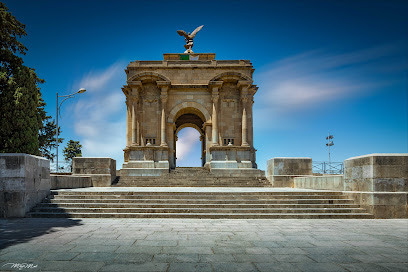
Elbey Palace
Explore Elbey Palace in Constantine, a historical landmark showcasing exquisite Ottoman architecture and rich cultural heritage.

Palais du Bey
Explore the breathtaking Palais du Bey in Constantine, a historical landmark showcasing Algeria's rich Ottoman and Moorish architectural heritage.

Constantin's statue
Discover the grandeur of Constantine's statue, a historical landmark that embodies the city's rich cultural heritage and Roman legacy.

Statue Constantin
Discover the Statue of Constantine, a historical landmark that embodies the rich cultural heritage of Algeria's ancient city, offering stunning views and insights.

SOUIKA _ vieille ville de constantine
Explore Souika, the historic heart of Constantine, where ancient charm meets vibrant local culture and flavors. A must-visit for every traveler.
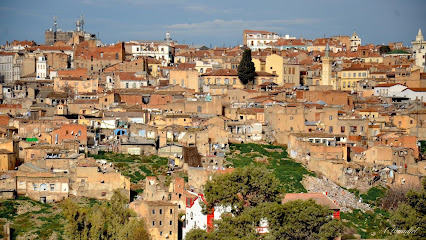
Vue sur les Gorges du Rhummel
Discover the breathtaking landscapes at Vue sur les Gorges du Rhummel, a must-visit scenic viewpoint in Zighoud Youcef, Algeria.

La Medersa
Explore the rich heritage and architectural splendor of La Medersa, a historical museum in Constantine, Algeria, showcasing the beauty of Islamic culture.

مغارة الدببة
Explore the breathtaking Majestic Rock of the Dabbah in Constantine, a natural wonder rich in history and stunning landscapes perfect for travelers.
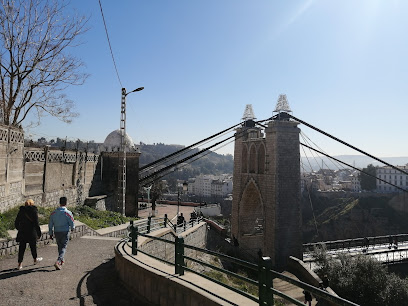
La place دنيا الطرائف
Experience the vibrant culture and stunning architecture at La place دينا الطرائف, a must-visit tourist attraction in Constantine, Algeria.
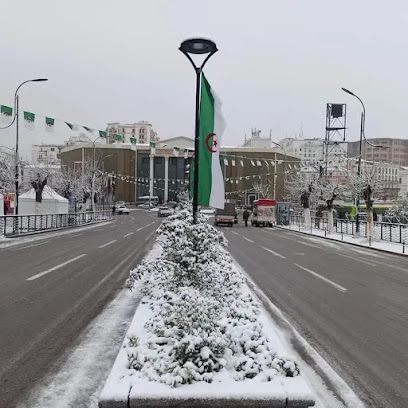
تمثال قسطنطين العظيم وسط المدينة
Uncover the charm of the Great Constantine Statue, a stunning landmark that showcases the rich history and culture of Constantine, Algeria.
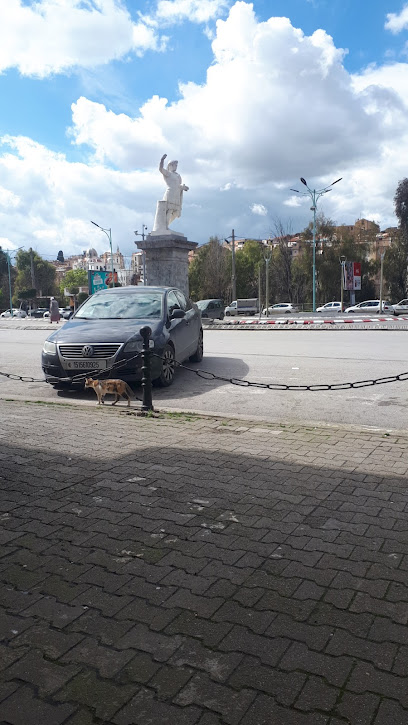
ساحة تصريف العملات
Explore the beautiful Villa in Constantine, Algeria, a captivating blend of history, architecture, and serene landscapes waiting to be discovered.

Panoramic View Sidi M'Cid Bridge
Discover the stunning Sidi M'Cid Bridge in Constantine, Algeria, a historical landmark offering breathtaking views and a glimpse into the city's rich cultural heritage.

Unmissable attractions to see
Grande Mosquée de Constantine
Explore the Grande Mosquée de Constantine, a stunning architectural marvel reflecting the rich Islamic heritage and cultural history of the region.

L'aqueduc romain
Experience the grandeur of L'aqueduc romain, a remarkable Roman aqueduct in Constantine, Algeria, blending history with stunning natural beauty.

La Medersa
Discover the architectural beauty and historical significance of La Medersa in Constantine, a must-visit destination for culture enthusiasts and travelers alike.

تمثال قسطنطين العظيم وسط المدينة
Explore the Great Constantine Monument, a historical landmark that reflects Algeria's rich heritage and architectural beauty in the stunning city of Constantine.

Essential places to dine
Igherssan Restaurant
Experience authentic Algerian flavors at Igherssan Restaurant in Constantine, where tradition meets taste.

Oxygène Snack
Experience authentic Algerian flavors at Oxygène Snack in Constantine - where tradition meets taste in a cozy setting.

Restaurant RAIS
Savor authentic Algerian cuisine at Restaurant RAIS in Constantine - where every dish tells a story.
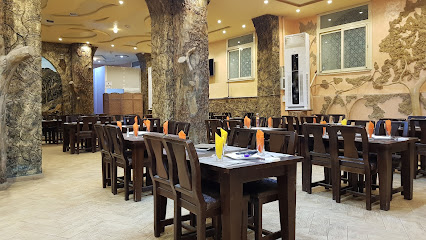
ZAZA RESTAURANTS
Experience authentic Algerian cuisine at Zaza Restaurants in Constantine - where tradition meets taste in every dish.

El fessia Food
Experience authentic Algerian cuisine at El Fessia Food in Constantine - where every dish is crafted with passion and tradition.

مطعم البهجة للبزلوف
Experience authentic Algerian cuisine at مطعم البهجة للبزلوف in Constantine – where every dish tells a story.

Restaurant Le Vieux Roche
Experience authentic Algerian cuisine at Restaurant Le Vieux Roche in Constantine - where every dish tells a story.

Bouzelouf Ben Djamaa
Experience authentic Algerian cuisine at Bouzelouf Ben Djamaa in Constantine – where tradition meets flavor.

Restaurant Le Coin
Experience authentic Algerian cuisine at Restaurant Le Coin in Constantine—where tradition meets taste.

Restaurant Famille Ben Hamouda
Discover authentic Algerian cuisine at Restaurant Famille Ben Hamouda in Constantine – where tradition meets taste in every dish.

Markets, malls and hidden boutiques
Boutique El Rayhane
Explore Boutique El Rayhane in Constantine, where contemporary fashion meets local charm. Discover unique women's clothing and enhance your style.
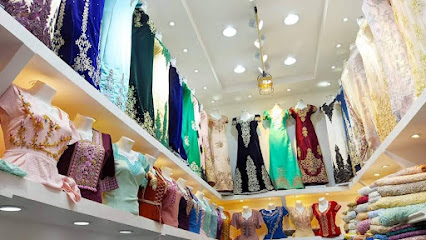
La boutique elle
Explore La Boutique Elle in Constantine for a vibrant selection of traditional and modern fabrics that celebrate Algeria's rich textile heritage.

Boutique Roza|بوتيك روزا للعرائس
Explore Boutique Roza in Constantine for exquisite bridal fashion and personalized service, ensuring every bride shines on her special day.

The LADI shopping
Explore The LADI Shopping in Constantine for exquisite women's clothing that blends local culture with contemporary style, perfect for every fashion lover.

Mon luxe shop
Explore Mon Luxe Shop in Constantine for unique fashion accessories that blend local craftsmanship with contemporary style.

Boutique DIDA
Discover unique fashion at Boutique DIDA in Constantine, where local style meets modern elegance in a charming shopping experience.

Boutique Chouchou
Discover unique fashion accessories at Boutique Chouchou in Constantine, where style meets tradition and every piece tells a story.

Casa shopping
Explore the latest trends in women's fashion at Casa Shopping, a stylish boutique in the heart of historic Constantine.

Boutique HANA
Discover unique local fashion and vibrant styles at Boutique HANA in the heart of Constantine, a must-visit for fashion lovers and tourists alike.
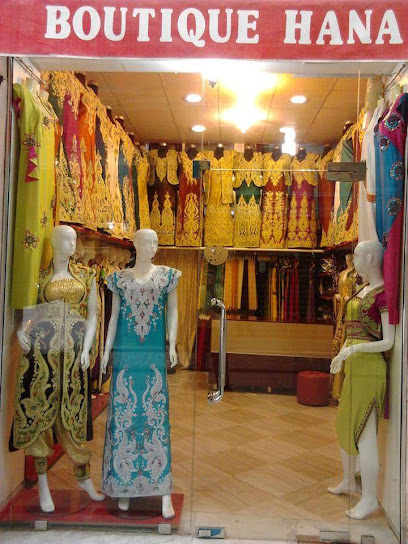
Pink Boutique
Discover the charm of Pink Boutique in Constantine, where elegance meets local fashion in a stunning array of women’s clothing and exquisite lingerie.

Essential bars & hidden hideouts
Igherssan Restaurant
Experience authentic Algerian cuisine at Igherssan Restaurant in Constantine, where traditional flavors meet a welcoming atmosphere.

Magic House
Discover the vibrant culinary scene at Magic House in Constantine, where Algerian flavors meet international cuisine in a warm and inviting atmosphere.

TakeOff Lounge
Explore the flavors of Algeria at TakeOff Lounge, a vibrant restaurant in Constantine offering a unique blend of local and international cuisine.
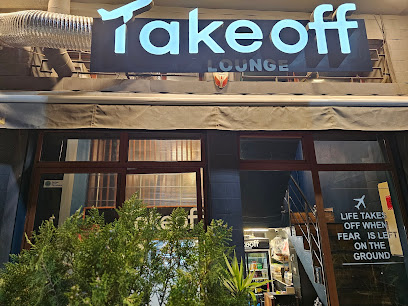
Restaurant La Concorde
Discover the flavors of Algeria at Restaurant La Concorde, a culinary delight in the heart of Constantine, offering authentic dishes and a cozy atmosphere.

Oxygène Snack
Discover the flavors of Algeria at Oxygène Snack, a delightful restaurant in the heart of Constantine offering local delicacies and a cozy atmosphere.

Restaurant RAIS
Experience the essence of Algerian cuisine at Restaurant RAIS in Constantine, a delightful spot for authentic flavors and warm hospitality.

Pattaya lounge
Discover the charm of Pattaya Lounge in Constantine – a perfect blend of fast food and café culture for every traveler.
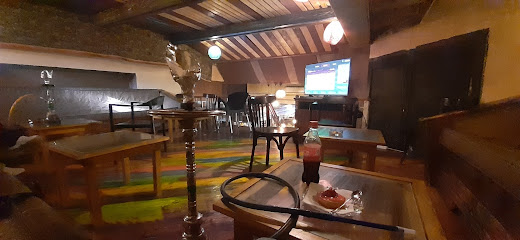
ملك اللوبيا king of bean's
Discover the authentic tastes of Algeria at King of Bean's, a charming restaurant in Constantine specializing in delicious bean dishes.
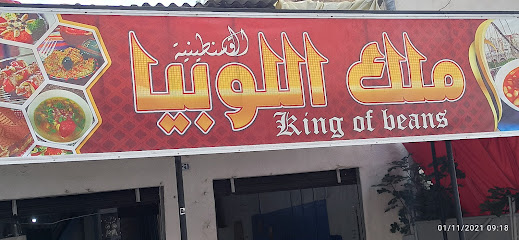
Seven Eleven
Experience the best of pizza and lounge ambiance at Seven Eleven in Constantine, where every slice tells a story of flavor and comfort.

Aiche House
Discover the rich flavors of Algeria at Aiche House, a top grill house in Hamma Bouziane offering an unforgettable dining experience.

Local Phrases
-
- Helloسلام
[salaam] - Goodbyeوداعا
[wadaa'an] - Yesنعم
[na'am] - Noلا
[la] - Please/You're welcomeمن فضلك/على الرحب والسعة
[min fadlik/ala alrahb wasi'at] - Thank youشكرا
[shukran] - Excuse me/Sorryعذرا
[aathiran] - How are you?كيف حالك؟
[kayfa haluk?] - Fine. And you?بخير. وأنت؟
[bi khayr. wa'ant?] - Do you speak English?هل تتكلم الإنجليزية؟
[hal tatakallam al'injlizia?] - I don't understandأنا لا أفهم
[ana la afham]
- Helloسلام
-
- I'd like to see the menu, pleaseأريد أن أرى القائمة، من فضلك
[uridu an ara alqaimah, min fadlik] - I don't eat meatأنا لا آكل اللحوم
[ana la aakul al lahoom] - Cheers!في صحتك!
[fi sahtak!] - I would like to pay, pleaseأريد أن أدفع، من فضلك
[uridu an adfa', min fadlik]
- I'd like to see the menu, pleaseأريد أن أرى القائمة، من فضلك
-
- Help!النجدة!
[alnajdah!] - Go away!اتركني وشأني!
[itrkunii washanii!] - Call the Police!اتصل بالشرطة!
[atassil bialshurtah!] - Call a doctor!اتصل بطبيب!
[atassil bitalib!] - I'm lostلقد ضللت الطريق
[laqad dalalt altariq] - I'm illأنا مريض
[ana mariid]
- Help!النجدة!
-
- I'd like to buy...أريد أن أشتري...
[uridu an ashtari...] - I'm just lookingأنا فقط أتطلع
[ana faqat atatallau] - How much is it?كم ثمنها؟
[kam thamanuha?] - That's too expensiveهذا غالي جدا
[hatha ghali jiddan] - Can you lower the price?هل يمكنك خفض السعر؟
[hal yumkinuka khafd alsaeir?]
- I'd like to buy...أريد أن أشتري...
-
- What time is it?كم الساعة؟
[kam alsaa'ah?] - It's one o'clockالساعة الواحدة
[alsaa'ah alwahidah] - Half past (10)النصف بعد (10)
[alnusf ba'd (10)] - Morningالصباح
[assabah] - Afternoonالظهر
[alzuhur] - Eveningالمساء
[almasa'] - Yesterdayالبارحة
[albarihah] - Todayاليوم
[alyawm] - Tomorrowغدا
[ghadan] - 1واحد
[wahid] - 2اثنان
[ithnayn] - 3ثلاثة
[thulatha] - 4أربعة
[arba'ah] - 5خمسة
[khamsah] - 6ستة
[sittah] - 7سبعة
[sab'ah] - 8ثمانية
[thamania] - 9تسعة
[tis'ah] - 10عشرة
[asharah]
- What time is it?كم الساعة؟
-
- Where's a/the...?أين...
[ayn...] - What's the address?ما هو العنوان؟
[ma huwa al'anaan?] - Can you show me (on the map)?هل يمكنك أن تريني (على الخريطة)؟
[hal yumkinuka an turiini (ala alkhariitah)?] - When's the next (bus)?متى الحافلة القادمة؟
[mata alhafulat alqadimah?] - A ticket (to ....)تذكرة (إلى ....)
[tadhkarah (ila ....)]
- Where's a/the...?أين...
History of La Medina
-
La Medina, the historic heart of Constantine, has its roots in the medieval period, specifically during the 8th century when the city was under Arab rule. The neighborhood was established as a bustling market area, reflecting the city's importance as a trade hub between the Mediterranean and the Sahara. The narrow winding streets and traditional architecture exemplify the Islamic influence on the region, showcasing a blend of Berber and Arab cultures.
-
During the Ottoman period, from the 16th to the 19th centuries, La Medina experienced significant architectural development. Many of the buildings from this era, including mosques and caravanserais, were constructed, enhancing the cultural landscape of the neighborhood. The famous Bey's Palace, located nearby, is a testament to the opulence and strategic importance of Constantine during this time, serving as a residence for local rulers.
-
The French colonization of Algeria in the 19th century brought profound changes to La Medina. The colonial administration undertook significant urban planning efforts, which included the construction of new roads and public buildings, often at the expense of traditional structures. Despite this, many aspects of local culture and traditions remained resilient, blending French colonial influences with indigenous practices.
-
The Algerian War of Independence from 1954 to 1962 had a significant impact on La Medina. The neighborhood became a center of resistance against colonial rule, with many local inhabitants participating in the struggle for freedom. The scars of the war are still visible today, as many buildings were damaged or destroyed during the conflict, but the spirit of the community remained strong, fostering a renewed sense of identity and purpose.
-
In recent years, La Medina has undergone a revival aimed at preserving its rich cultural heritage. Efforts have been made to restore historical buildings and promote tourism, highlighting the neighborhood's significance as a symbol of Constantine's historical journey. Cultural festivals and events are frequently held, celebrating the diverse traditions of the region, and attracting visitors interested in the unique blend of history and modernity.
La Medina Essentials
-
La Medina is situated in the heart of Constantine, Algeria. To reach La Medina from other neighborhoods, you can take a taxi or use local buses that frequently connect various parts of the city. The central bus station is located near Place des Martyrs, where you can find buses heading towards La Medina. If arriving from the Constantine Airport, taxis are the most convenient option, taking approximately 20 minutes to reach the neighborhood.
-
La Medina is best explored on foot, as many of its attractions are within walking distance. However, local buses and taxis are also available for longer distances or if you wish to visit nearby neighborhoods. Bicycles can be rented from various shops in Constantine, offering a unique way to explore the area. Note that traffic can be congested, so walking is often the quickest way to navigate.
-
La Medina is generally safe for tourists; however, it's advisable to stay vigilant, especially in crowded areas. Petty theft, such as pickpocketing, can occur, particularly near tourist sites. Avoid walking alone at night in less populated areas and be cautious in the vicinity of the old market, where crime rates are slightly higher. Always keep your belongings secure and be aware of your surroundings.
-
In case of emergency, dial 17 for police assistance or 14 for fire services. For medical emergencies, you can reach out to the local hospitals or clinics. It is recommended to have appropriate travel insurance covering medical situations. Pharmacies are available throughout La Medina for minor health issues, and staff can often assist with basic English.
-
Fashion: Do dress conservatively, particularly when visiting religious sites. Avoid shorts and sleeveless tops. Religion: Do respect local customs; refrain from eating or drinking in public during Ramadan. Public Transport: Do offer your seat to the elderly and pregnant women. Don't engage in loud conversations. Greetings: Do greet with a smile and a handshake. Don’t use first names until invited to do so. Eating & Drinking: Do try local dishes and accept food offered to you. Don’t waste food, as it is considered disrespectful.
-
To experience La Medina like a local, visit the bustling souks where you can find handmade crafts and local delicacies. Try to learn a few basic Arabic phrases; locals appreciate the effort. Enjoy mint tea in local cafes, which is a traditional practice. If possible, attend a local festival or event to immerse yourself in the vibrant culture. Explore the lesser-known streets to discover hidden gems and local eateries away from the tourist crowds.
-
When visiting religious sites, be sure to remove shoes where required and maintain a respectful demeanor. Photography may be restricted in certain areas, so always ask for permission before taking pictures of people or sacred places. Understand that public displays of affection are frowned upon, so keep interactions discreet. Engage with locals by asking questions about their culture and traditions, which can lead to enriching conversations.
Trending Landmarks in La Medina
-
Sidi M'Cid Bridge
-
Monument aux Morts
-
Elbey Palace
-
Palais du Bey
-
Constantin's statue
-
Statue Constantin
-
SOUIKA _ vieille ville de constantine
-
Vue sur les Gorges du Rhummel
-
La Medersa
-
مغارة الدببة
-
La place دنيا الطرائف
-
تمثال قسطنطين العظيم وسط المدينة
-
ساحة تصريف العملات
-
Panoramic View Sidi M'Cid Bridge
Nearby Cities to La Medina
-
Things To Do in Setif
-
Things To Do in Annaba
-
Things To Do in Bejaia
-
Things To Do in Tizi Ouzou
-
Things To Do in Tozeur
-
Things To Do in Bizerte
-
Things To Do in Algiers
-
Things To Do in Tunis
-
Things To Do in Hammamet
-
Things To Do in Sousse
-
Things To Do in Monastir
-
Things To Do in Sfax
-
Things To Do in Djerba
-
Things To Do in Palma de Mallorca
-
Things To Do in Palermo










